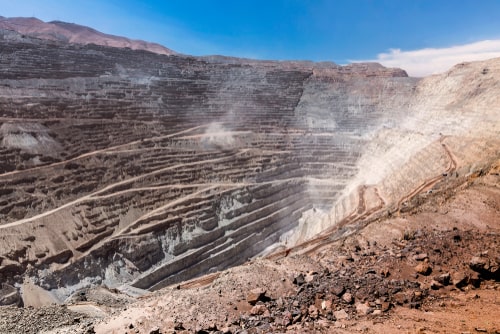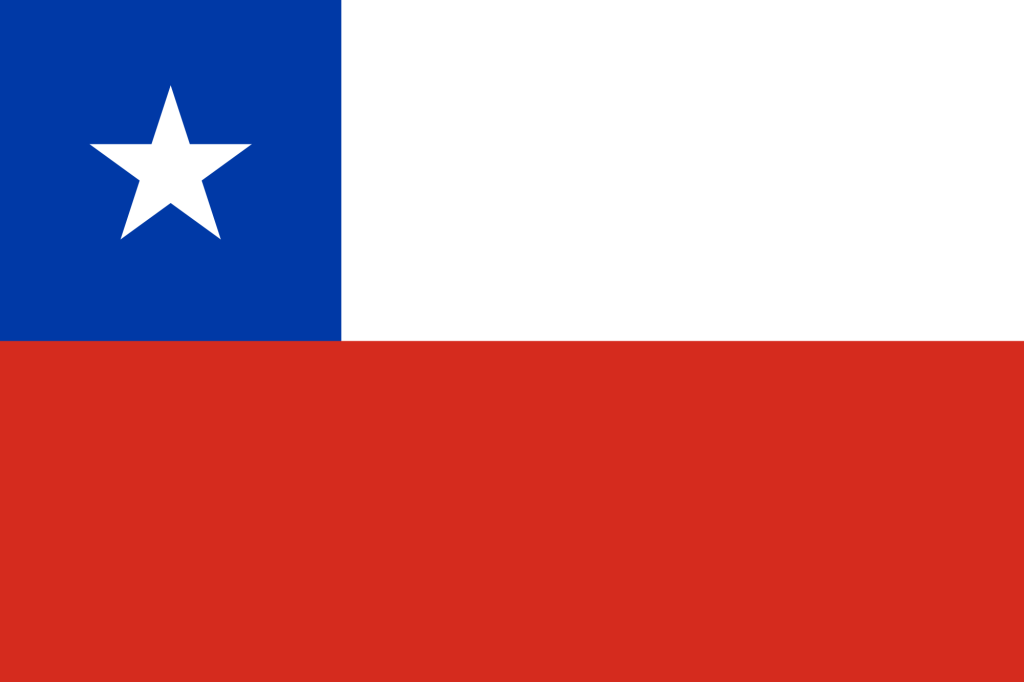Last updated on September 29th, 2022
39. Employers in Chile also have the authority to dismiss their employees without any prior indication and/or justification. However, if the employee is employed by the company for more than 12 months, some compensation is to be made before the employee is fired.[33]
40. Employees in Chile are entitled to a rest period between 9 pm on Saturdays to 6 am on Mondays. Employees cannot be made to work on Sundays, as per the Chilean law, unless exceptionally required.[33]
41. Michael Jackson visited Chile On October 18, 1993, for the first and only time in his lifetime.[34]

42. It is one of the world’s largest producers of copper.[35]
43. Santiago is one of the safest large cities in Latin America.
44. Chile has the second lowest homicide rate in the Americas after Canada.[43]
45. Protective clothing and heavy sun block is required to avoid cancer causing UV radiations, particularly in the Patagonia region in Chile and Argentina. The region is located at the southern tip of South America. The area occasionally comes under the influence of ozone-depleted air masses from the Antarctic polar vortex which causes enhanced exposure to UV radiation from the sun.
46. In 2003, an extraordinary discovery of a hidden whale nursery in Chile was made by scientists. There was a particular place where whales go in large numbers to rear their young and to feed. The blue whale is the largest mammal on earth and is nearing extinction due to global commercial whaling activities.[38]
47. In 2008, Chile declared permanent ban on whaling in its waters.[37]
48. Vicuna, the smallest member of the camelid family is found in Chile. It has a slender body; a long neck; thin legs; and long, silky fur. It is a reddish-brown on its uppersides and white on its undersides.[40]
49. The Chilean flamingo is a tall, large bodied bird with a long neck and small head. All flamingos feed with their bills upside-down. Their beautiful pink plumage comes from the carotenoid pigments they consume as a part of their diet. Their upper bill is shorter than their lower bill. It is interesting to note here that their fossil records date back to 10,000 years ago.[42]
50. The Pudu, which is the world’s smallest deer, is found in Chile.[36]

About the flag of Chile
The flag of Chile was officially declared the national flag on 18th October 1817, following a victory against the Spanish. It was also waived in 1818 for the Pledge of Independence.
Chilean patriot Jose Ignacio Zenteno designed the first flag of Chile.
The drawing is attributed to Gregorio de Anda y Varela and inspired by the Minister of War, Bernardo O’Higgins, though some historians dispute this. Zenteno was inspired by the American flag and its stars. But instead of 13 stripes, he chose to use two: red and white with a blue square on the top left hand corner (hoist), bearing a lone white star in the center.

How the Chilean Flag Has Evolved Over Time
Initially, the flag was used in the early 18th Century by Mapuche troops during Arauco War. It was a five-pointed star on a blue background like the current canton. The second version featured an eight-angled star (octagram) in a blue diamond on a black background.
Between 1812 and 1814, Chile adopted Patria Vieja’s flag as its first national flag.
It was simple, designed in three equal horizontal bands of blue, white, and yellow without a star. An alternative design comprised reversed white and blue bands, a red cross of Santiago on the white stripe, and a coat of arms in the blue center.
The transition period between 1817 and 1818 saw a different variant of the Chilean flag in blue, white, and red horizontal fields. Identical to the pre-communist Yugoslavian flag, it was inspired by victory on 26th May 1817 at the Battle of Chacabuco, which ushered in the New Fatherland era. This version was quite popular and was the pride of Juan Gregorio de Las Heras. Though it was popularized initially, its relevance diminished a few months later because people used to confuse it with that of the Netherlands and revolutionary France. The transition flag is the last to be used until the present version was adopted.
Meaning and Symbolism of the Chilean Flag
O’Higgins claimed the flag’s star was the Star of Arauco. In the Mapuche culture, an octogram star represents Venus or the morning star, although the final design used a five-point star. The star depicts the integration of indigenous and European traditions in Chile.
The red color on Chile’s flag stands for the heros’ courage and the blood they shed for independence. Blue is the sky and the Pacific Ocean, while white is the Andes mountains, which are covered in snow. The white star is also a symbol of honor and progress, representing Chile as a centralized state rather than a federal one.
Other Interesting Facts About the Flag of Chile
A popular Chilean legend about the flag of Chile claims that it ranks number one among the most beautiful national flags in the world. The contest was allegedly held in Blankenberge, Belgium, in 1907.
Another version of the folktale holds that Chile had the second most beautiful flag in the 19th Century, after France.
As a national symbol, the flag must be in perfect condition and hoisted properly as required by the law. During Independence Day- September 18 and 19- all buildings must display the national flag. People who break this law during celebrations of national importance may face fines exceeding US$300.
Chile – country at a glance
| Independence | 18 September 1810 (from Spain) |
|---|---|
| Capital City | Santiago (33°26′S 70°40′W) |
| Largest City | Santiago (33°26′S 70°40′W) |
| Area | total: 756,102 sq km land: 743,812 sq km water: 12,290 sq km (slightly smaller than twice the size of Montana) |
| Population | 19,869,576 (2025 est.) |
| Population growth rate | 0.71% (2020 est.) |
| Literacy rate | 97% |
| Official Language | Spanish |
| Location | Southern South America, bordering the South Pacific Ocean, between Argentina and Peru |
| Continent | South America |
| Coastline | 6,435 km |
| Land boundaries | total: 7,801 km |
| Borders | Argentina 6,691 km; Bolivia 942 km; Peru 168 km |
| Currency | Peso (CLP) |
| Religion | Christianity |
| Demonym | Chilean |
| Suffrage | 18 years of age; universal |
| Life expectancy at birth | 80.3 years (2024 est.) Life expectancy at birth indicates the number of years a newborn infant would live if prevailing patterns of mortality at the time of its birth were to stay the same throughout its life. |
| National anthem | "Himno Nacional de Chile" (National Anthem of Chile) |
| Government type | presidential republic |
| President | Gabriel Boric |
| Senate President | Manuel José Ossandón |
| Climate | temperate; desert in north; Mediterranean in central region; cool and damp in south |
| Terrain | low coastal mountains, fertile central valley, rugged Andes in east |
| Mean elevation | 1,871 m |
| Lowest point | Pacific Ocean 0 m |
| Highest point | Nevado Ojos del Salado 6,880 m |
| Natural resources | copper, timber, iron ore, nitrates, precious metals, molybdenum, hydropower |
| Agricultural land | 21.1% |
| Birth rate | 12.4 births/1,000 population (2024 est.) |
| Death rate | 6.6 deaths/1,000 population (2024 est.) |
| Sex ratio | 0.97 male(s)/female (2024 est.) |
| National symbols | huemul (mountain deer), Andean condor |
| National colors | red, white, blue |
| Industries | copper, lithium, other minerals, foodstuffs, fish processing, iron and steel, wood and wood products, transport equipment, cement, textiles |
| Exports | $111.123 billion (2024 est.) copper, fruit, fish products, paper and pulp, chemicals, wine |
| Imports | $99.239 billion (2024 est.) petroleum and petroleum products, chemicals, electrical and telecommunications equipment, industrial machinery, vehicles, natural gas |
| GDP - per capita (PPP) | $30,200 (2024 est.) |
| Time Zone | CLT and EAST (UTC−3 and −5) |
| Internet country code | .cl |
| Calling Code | +56 |
| Drives on the | Right |
| Table last updated | August 09, 2025 |
